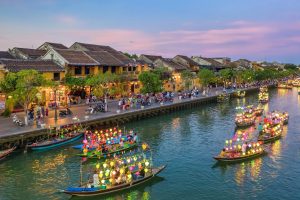Hoi An is a captivating ancient town located in Quang Nam Province, Central Vietnam. Renowned for its well-preserved architecture, lantern-lit streets, and rich cultural heritage, it offers a unique blend of history, culture, and natural beauty. If you want to explore Hoi An, here are some ideas to add to your trip…
I. Historical Significance
Hoi An, originally known as Faifo, was a major Southeast Asian trading port from the 15th to the 19th century. Explore Hoi An you can explore the town’s architecture reflects its historical significance, with influences from Chinese, Japanese, and European traders who once conducted business here. In 1999, Hoi An Ancient Town was designated a UNESCO World Heritage site for its exceptionally well-preserved example of a Southeast Asian trading port.
II. Movement: Transportation to Hoi AN
Since the main transit point to Hoi An is the railway station, Da Nang Vehicle. The distance from the center of Da Nang to Hoi An is approximately 30 kilometers (about 19 miles). So that you can take the bus/taxi to Hoi An very conveniently.
- Travel from the direction of Hanoi can also pick a stop at Tam Ky (Quang Nam) Station, here to catch a car to Hoi An.
- If you come from the direction of HCMC you can choose a trip to the north or Da Nang, which will go by and stop at Hoi An.
III. Hoi An Attractions-Explore Hoi An
1. Ancient Town: Stroll through the UNESCO World Heritage site with its narrow streets, traditional houses, and historic landmarks like the Japanese Covered Bridge and Phung Hung Ancient House.
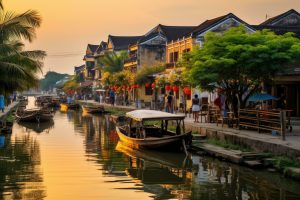
2. Hoi An Night Market: Explore the vibrant market for local handicrafts, souvenirs, and delicious street food.
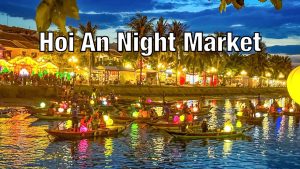
3. Hoi An Lantern Festival: If your trip coincides with the full moon, don’t miss this magical event where the town is illuminated by thousands of lanterns.

4. Cua Dai Beach & An Bang Beach : Relax on the beautiful beaches just a short ride from the town center.
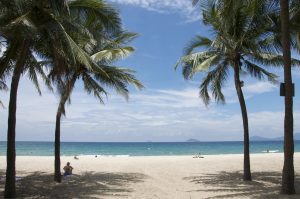

5. My Son Sanctuary: Take a day trip to this ancient Hindu temple complex, another UNESCO World Heritage site.

6. Tra Que Vegetable Village: Experience rural life and learn about organic farming practices.
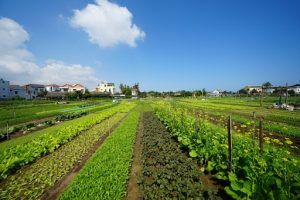
7. Phuc Kien Assembly Hall: A vibrant and intricately designed Chinese assembly hall.
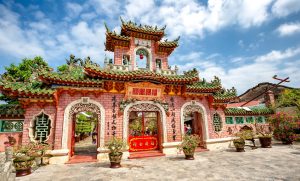
8. Old House of Tan Ky: A 200-year-old house showcasing traditional Vietnamese architecture and interior design.
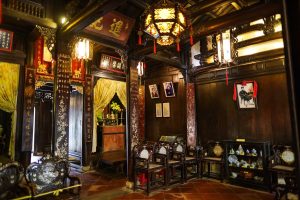
9. Quan Cong Temple: A temple dedicated to the Chinese general Quan Cong, symbolizing loyalty and integrity.
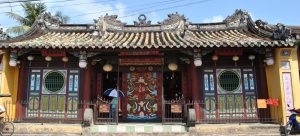 IV. Hoi An Cuisine
IV. Hoi An Cuisine
1. Cao Lau: A must-try noodle dish unique to Hoi An, featuring pork, fresh greens, and crispy croutons.

You can try it at:
Cao lầu Hội An Trung Bắc – Số 87 đường Trần Phú, trung tâm TP. Hội An, Quảng Nam
Cao lầu Bà Thanh – Số 26 đường Thái Phiên, thuộc trung tâm TP. Hội An, Quảng Nam
Price about $1-$1,5
2. White Rose Dumplings: Delicate dumplings filled with shrimp or pork.
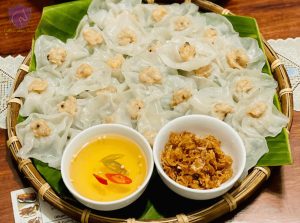
You can try it at:
Nhà hàng Bông Hồng Trắng – 533 Đ. Hai Bà Trưng, Phường Cẩm Phổ, Hội An, Quảng Nam
Price about $2,5-$3
3. Hoi An Chicken Rice: Flavored rice with tender chicken and fresh herbs.
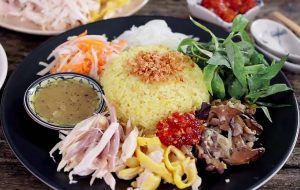
You can try it at:
Ba Thuan chicken rice – 17/4 Hai Ba Trung, Minh An, Hoi An, Quang Nam (685/4, Hai Ba Trung, Minh An, Hoi An, Quang Nam)
Price about $1,2-$2
4. Banh Xeo: Savory Vietnamese pancakes filled with shrimp, pork, and bean sprouts.

You can try it at:
Bánh xèo quán Giếng Bá Lễ – 45/51 Trần Hưng Đạo, Thành Phố Hội An, Quảng Nam
Bánh xèo sông Hoài – 59/32 Đường 18 Tháng 8, Thành Phố Hội An, Quảng Nam
Price about $1,4-$2
V. Activities
- Cooking Classes: Learn to make traditional Vietnamese dishes at one of the many cooking schools.
- Bicycle Tours: Explore the countryside and nearby villages on a guided bicycle tour.
- Boat Rides: Enjoy a boat trip on the Thu Bon River, especially at sunset.
- Tailor Shops: Get custom-made clothes at one of Hoi An’s famous tailor shops.
- Fishing Village Tours: Experience local fishing techniques and enjoy fresh seafood.
TIPS for you when you explore Hoi An:
Best Time to Visit: The best time to visit Hoi An is from February to April and August to October when the weather is pleasant and rainfall is minimal.
Getting Around: The town is compact and best explored on foot or by bicycle. Motorbike rentals are also available for exploring the surrounding areas. You can find pedicabs throughout Hoi An, especially near tourist attractions and hotels. Some hotels also offer to arrange pedicab tours for their guests.
Currency: Vietnamese Dong (VND) is the local currency, though US dollars are also widely accepted.
Advance Booking: Especially during peak tourist seasons, it’s advisable to book accommodations in advance.
Hoi An’s blend of history, culture, and scenic beauty makes it a must-visit destination in Vietnam. Whether you’re interested in exploring ancient architecture, enjoying delicious cuisine, or simply relaxing by the beach, explore Hoi An has something for everyone.
![]() Visa FOPA Company
Visa FOPA Company
📞+84 906 044 975 (Mr. Do)
